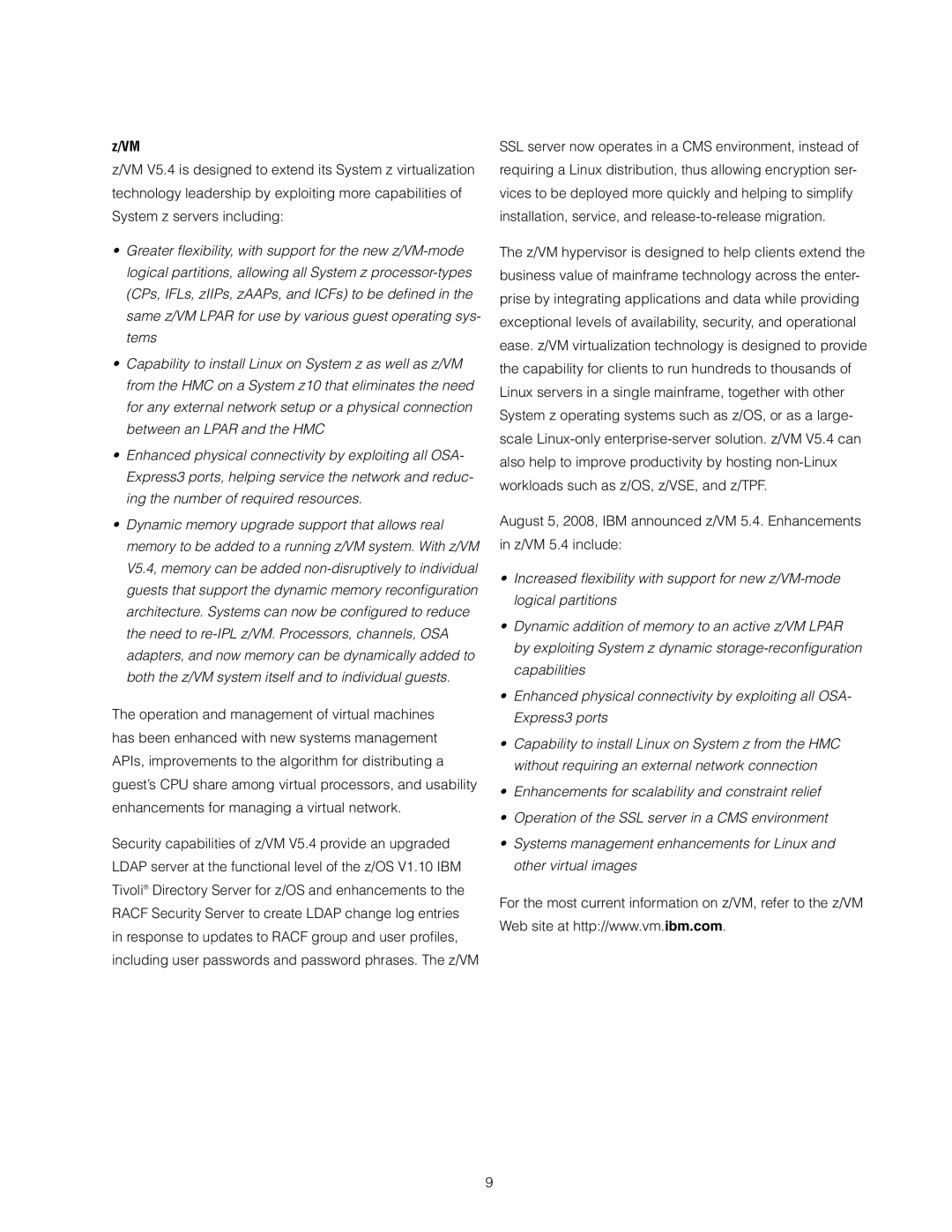z/VM
z/VM V5.4 is designed to extend its System z virtualization technology leadership by exploiting more capabilities of System z servers including:
•Greater fl exibility, with support for the new
•Capability to install Linux on System z as well as z/VM from the HMC on a System z10 that eliminates the need for any external network setup or a physical connection between an LPAR and the HMC
•Enhanced physical connectivity by exploiting all OSA- Express3 ports, helping service the network and reduc- ing the number of required resources.
•Dynamic memory upgrade support that allows real memory to be added to a running z/VM system. With z/VM V5.4, memory can be added
The operation and management of virtual machines has been enhanced with new systems management APIs, improvements to the algorithm for distributing a guest’s CPU share among virtual processors, and usability enhancements for managing a virtual network.
Security capabilities of z/VM V5.4 provide an upgraded LDAP server at the functional level of the z/OS V1.10 IBM Tivoli® Directory Server for z/OS and enhancements to the RACF Security Server to create LDAP change log entries in response to updates to RACF group and user profiles, including user passwords and password phrases. The z/VM
SSL server now operates in a CMS environment, instead of requiring a Linux distribution, thus allowing encryption ser- vices to be deployed more quickly and helping to simplify installation, service, and
The z/VM hypervisor is designed to help clients extend the business value of mainframe technology across the enter- prise by integrating applications and data while providing exceptional levels of availability, security, and operational ease. z/VM virtualization technology is designed to provide the capability for clients to run hundreds to thousands of Linux servers in a single mainframe, together with other System z operating systems such as z/OS, or as a large- scale
August 5, 2008, IBM announced z/VM 5.4. Enhancements in z/VM 5.4 include:
•Increased fl exibility with support for new
•Dynamic addition of memory to an active z/VM LPAR by exploiting System z dynamic
•Enhanced physical connectivity by exploiting all OSA- Express3 ports
•Capability to install Linux on System z from the HMC without requiring an external network connection
•Enhancements for scalability and constraint relief
•Operation of the SSL server in a CMS environment
•Systems management enhancements for Linux and other virtual images
For the most current information on z/VM, refer to the z/VM Web site at http://www.vm.ibm.com.
9
